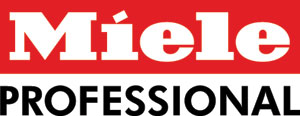Shifts in Healthcare Design Create Demand for New Products
LEED Certification
Of the more than 20,000 commercial projects that have earned LEED certification, more than 600 are healthcare facilities. In recognition of the unique nature of healthcare facilities, their strict regulatory requirements, 24/7 operations, and specific programmatic demands that make pursuing LEED NC difficult, USGBC released LEED for Healthcare in 2011.
LEED-HC acknowledges these differences by both modifying existing credits and creating new, healthcare-specific credits. For example, most of the Indoor Environmental Quality credits have been modified to align the need for infection control, to protect patients from contaminants.
LEED for Healthcare was written primarily for inpatient and outpatient care facilities and licensed long term care facilities. The rating system may also be used for medical offices, assisted living facilities and medical education and research centers. LEED for Healthcare addresses design and construction activities for both new buildings and major renovations of existing buildings.
Cleaning systems that save energy, monitor water usage, and reduce the amount of chemicals used may contribute to LEED credits for new construction and renovation in the following categories:
LEED-HC
WE Prerequisite 1: Water Use Reduction
Intent: Increase water efficiency within buildings to reduce the burden on municipal water supply and wastewater system
WE Credit 2: Water Use Reduction
Measurement and Verification
1-2 Points
Intent: Provide for the ongoing accountability and optimization of building water consumption performance over time.
WE Credit 3: Water Use
1-3 Points
Intent: Maximize water efficiency within buildings to reduce the burden on municipal water supply and wastewater systems. (This might not apply if the equipment flow rate/water use is regulated by health codes.)
EA Prerequisite 1
Fundamental Commissioning of Building Energy Systems
EA Prerequisite 2: Minimum Energy Performance
Intent: Establish the minimum level of energy efficiency for the proposed building and systems to reduce environmental and economic impacts associated with excessive energy use.
EA Credit 1: Optimize Energy Performance
1-24 Points
Intent: Achieve increasing levels of energy performance beyond the prerequisite standard to reduce environmental and economic impacts associated with excessive energy use.
EA Credit 5: Measurement and Verification
2 Points
Intent: Provide for the ongoing accountability of building energy consumption over time
IE Q Credit 2: Acoustic Environment (room noise)
1-2 Points
Intent: Provide building occupants with an indoor healing environment free of intrusive or disruptive levels of ID credit for Green Cleaning.
Pilot Credit 3: Medical and Process Equipment Efficiency
Intent: To reduce energy consumption by using efficient medical and other equipment.
LEED Recertification
Recertification LEED for Existing Buildings: Operations & Maintenance
IEQ Prerequisite 3: Green Cleaning Policy
Intent: To reduce the exposure of building occupants and maintenance personnel to potentially hazardous chemical, biological, and particulate contaminants, which adversely affect air quality, human health, building finishes, building systems, and the environment.
Conclusion
Green, leaner, and addressing HAIs are today's goals for all sectors of healthcare delivery that includes hospitals, ambulatory surgery and rehabilitation centers, and long-term care communities which are moving towards a home-like model. There is now recognition that the built environment plays a role in the transmission of pathogens and that effective and time-saving cleaning systems that use less chemicals can help meet those goals. Laundry systems for microfiber mops and cloths, washer disinfectors for reprocessing instruments, code-compliant quiet dishwashers for homescale continuing care retirement communities, and new dryers that use hot water to dry are some of the products on the market. They can also help contribute to LEED for Healthcare certification.
Endnotes
1. “Understanding the Role of Facility Design in the Acquisition and Prevention of Healthcare-Associated Infections,” HERD (Health Environments Research & Design), December 30, 2013.
2. Kelly M. Pyrek, “Environmental Hygiene: What We Know from Scientific Studies,” ENVIRONMENTAL HYGIENE Vol. 16, No. 9 September 2012
3. “Zeitgeists and development trends in long-term care facility design,” J Nurs Res. 2006 Jun;14(2):123-32.
4. www.epa.gov/region09/waste/p2/projects/hospital/mops.pdf
5. Am J Infect Control. 2007 Nov;35(9):569-73.
 |
Miele Professional is the commercial products division of Miele, Inc. The professional division leads the way in the development of innovative technology and meets the highest demands in washing, dishwashing, cleaning, and disinfection in commercial applications. |








